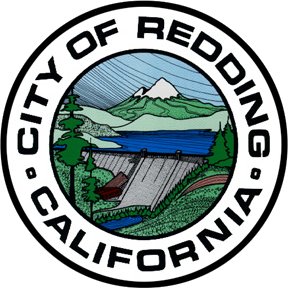 The City of Redding in Northern California has partnered with Emergent 3D and AccessHome to print the first on-site 3D-printed house in the State. The 1200-square-foot home will serve as on-site housing for the Enterprise Community Park Host. This fire-resistant, eco-friendly home could become the quintessential model for the future of affordable housing in Redding. A larger goal, however, is for the home to become a prototype that addresses global issues like affordable housing, disaster recovery, homelessness, and insufficient labor forces.
The City of Redding in Northern California has partnered with Emergent 3D and AccessHome to print the first on-site 3D-printed house in the State. The 1200-square-foot home will serve as on-site housing for the Enterprise Community Park Host. This fire-resistant, eco-friendly home could become the quintessential model for the future of affordable housing in Redding. A larger goal, however, is for the home to become a prototype that addresses global issues like affordable housing, disaster recovery, homelessness, and insufficient labor forces.
In California, 3.4 million homes will need to be built by 2025 to keep pace with the state’s housing needs. Given the state’s propensity for wildfire and the loss of more than 34,000 structures since 2017, the ability to build affordable, sustainable housing quickly and efficiently is crucial. This is why the Redding City Council supported this new, innovative housing construction approach with financing through its Housing Division to benefit local income-eligible households.
Matthew Gile and Don Ajamian, both of Redding, served on the Volunteer Organizations After Disaster (VOAD) committee following the Carr Fire, in which 1300 families lost their homes. They saw the demand to rebuild houses affordably and quickly following the fire. There were no good options. Fires in Santa Rosa, CA, the year before had attracted many of the construction trades in the region. The cost of materials was rising quickly. Many families were uninsured or under-insured. Gile and Ajamian decided to use their unique credentials to form Emergent 3D, a construction company that uses 3D printing and robotic construction to construct fire-resistant, sustainable concrete homes. The cost of 3D printing will be less than the cost of traditional construction once the processes and methods are refined.
Gile, the Founder and Chief Visionary Officer of Emergent 3D, who has founded two real estate investment companies and worked as a real estate broker, has a heart for humanitarian causes. Having served some of the most vulnerable populations in international conflict zones and disaster recovery areas, including the Carr Fire, Gile got a first-hand look at how devastating a lack of housing can be for a community when disaster strikes.
With more than 1.6 billion of the world’s people lacking adequate housing, Gile sees 3D printing as an opportunity to change the housing landscape – both locally and globally. He believes the ability to ensure quick and efficient production of high-quality homes is a solution for disaster recovery, the need for affordable housing, and the crisis of homelessness.
Don Ajamian, Chief Executive Officer of Emergent 3D, has spent his life in the construction industry, forming Don Ajamian Construction, Incorporated in 2004. With over 100 company employees and numerous commercial and residential projects completed all over California and Oregon, Ajamian is a leader in the local Redding construction industry. Ajamian is especially passionate about giving back to the community that has given him so much.
Together, Gile and Ajamian lead a small team of talented engineers, architects, and financial analysts to prove that housing can be simultaneously affordable, accessible, eco-friendly, and beautiful.
In just a few days, Emergent 3D can print a single housing unit. While the entire process can take six to eight months to complete all building elements like electricity and plumbing in each home, the 3D printing process could be a vital step in producing more housing in a smaller window of time. Printing the house on the construction site saves time and costs while increasing efficiency.
In California, traditional building costs are between $225 and $400 per square foot. 3D Construction Printing offers an automated solution to greatly reduce these costs which could translate to a larger supply of affordable housing.
“Redding was the perfect place to launch our vision. There were so many stories of people who had lost everything in the Carr Fire and could not rebuild affordably,” says Matthew Gile. “Emergent 3D is available for rapid, on-site building to help reduce the overall cost of construction. Best of all, our designs are beautiful and dignifying. Just because you can’t afford to rebuild the home you lost doesn’t mean you don’t deserve a home you can be proud of.”
As Emergent 3D was looking to complete building plans for the first on-site 3D-printed home in the state of California with the City of Redding, the City’s Parks and Recreation Department was looking to install a permanent park host house in Enterprise Community Park. The timing would prove serendipitous for the community looking for creative solutions to a housing shortage and homelessness simultaneously.
The Park Host will live in an on-site 3D-printed home while performing limited duties like opening and closing the entry gate, posting park reservations in picnic areas, and cruising the facility for maintenance issues that would then be referred to Parks staff.
While Enterprise Community Park has had park hosts in the past, the hosts had previously brought their trailers to the premises. The 3D-printed home will be a larger, more comfortable, and more sustainable unit. The hope is that this permanent home will encourage the park host to remain in the role for a longer period, bringing a sense of stability to both the park host and the park location.
The final piece in the puzzle was AccessHome, a Redding-based non-profit organization that helps develop affordable housing projects in Shasta County. Seeing the opportunity to create both a job and a home for an individual in need, AccessHome is critical to the success of the project and will be responsible for many of the intricate details that will turn the house into a home.
AccessHome is the Operator for the home at Enterprise Park and has committed to a 20-year contract to maintain the property. Part of this contract includes identifying someone who is income-eligible for housing assistance who will also serve in the role of Park Host. A percentage of the rent for the unit will be paid by the selected individual, based on their income.
“Ideally, we would like to see someone who has graduated from one of our local recovery programs or someone who needs rapid rehousing. The goal is to be a part of the solution – and this concept will help on multiple levels,” says Kim Niemer, Director of Community Services with the City of Redding.
“We are extremely excited for the opportunity to partner with the City of Redding and Emergent 3D on a project that will help bring more permanent housing to our community,” said Dawn Smith, Executive Director for AccessHome. “Our vision is that these new 3D-printed homes will offer desirable, affordable housing for our community.”
The City of Redding has been focused on affordable housing solutions for years to meet the growing demand for housing in one of the largest California cities north of Sacramento. The sudden loss of so many homes in the Carr Fire, amidst a recovering economy, created a housing market that was quickly becoming out of reach for some residents, a situation that is not limited to Redding, California.
“We’re proud to be one of the first jurisdictions in California to issue building permits for this type of project. Looking at creative and innovative solutions for our community is a win-win for everyone,” says Jeremy Pagan, Development Services Director with The City of Redding. “This groundbreaking technology and its potential could be a game[1]changer – not only for Redding, but other communities dealing with the rising housing costs and a quickly-decreasing pool of construction workers.”
The public is invited to observe the construction work in progress on Wednesday, August 31 and Thursday, September 1, between 3 and 5 p.m. For more information on this project, visit cityofredding.org/3dhomes.





